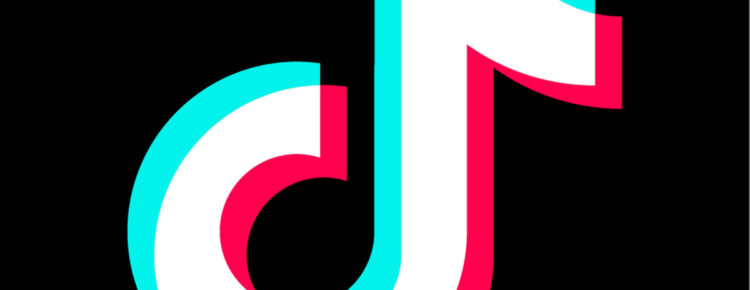

Tiktok has emerged as the fastest growing social media platforms. Until a couple of years back, any discussion regarding social media would feature Facebook, Instagram, Twitter, Pinterest. But today there is one more that would certainly feature in that discussion, it’s Tiktok. It is rising up the charts at an astonishing pace. Let’s look at how this app came into existence and could it be a part of a brand’s marketing strategy.
History of
Tiktok:
Tiktok is an android and IOS app which lets users share short videos. It was first launched in China in 2016 by the name “Douyin”. The app amassed 100 million users within the first year. Looking at this success, the company “ByteDance” who launched it decided to make it global and rebranded it as “Tiktok” in September 2017. Three months later, ByteDance acquired an already known “Musical.ly” app in a huge 1billion USD deal. Post this acquisition, Tiktok began to make an impression internationally. Users on Musical.ly were migrated to Tiktok.
The user base saw a massive spike. By 2018, user count grew to over 650 million and it’s over 800 million by mid-2019. It is currently the 4th most downloaded app in the world after Facebook, Messenger, and Whatsapp. There are over 20 million active users in India. This app is currently available in 154 countries and supports 75 different languages.
Marketing on
Tiktok:
Marketers are constantly on the lookout for
new avenues to reach the target audience. Tiktok is being considered as a vital
tool for marketing strategy. Owning to its massive user count, businesses are
aiming to utilize this app for expanding their reach.
As of now, Tiktok doesn’t have any paid ad feature but it seems a matter a time before they decide to introduce one. However, brands are keen to tap into the rising popularity and have begun to utilize various available options to reach the users. Below are some the techniques used by brands to promoting products on Tiktok
- Challenge/Hashtag campaign: Tiktok is primarily based on viral content. Brands can create a hashtag campaign that encourages users to create their own videos and post with the hashtag. A Challenge targets the human tendency of showcasing their own talent and if you are good with the skills there is every chance that the video can go viral. Once a challenge is launched, brands invite their fans and followers to share their own videos. This brand-specific content generated by the user brings in more engagement and awareness. A banner ad is displayed on the user’s discover page if clicked it directs the user to more details regarding the challenge. The performance of this campaign can be measured in views, clicks, and engagement.
- Brand Takeover: These can be an image or a short video ad that contains a link to a brand’s website or specific hashtag challenge. These are category-based ads; brands can take up any particular category and an advertiser for related products. Only one advertiser is allowed per day for one category. User sees these ads at the time the app launched. It can be 3 seconds long image or 3-5 seconds GIF/Video. The performance can be tracked in terms of Impressions and clicks.
- Influencer: Brands can collaborate with those Tiktok users having a massive following, even celebrities and have them create brand-specific promotional content. Any product recommendation coming from an influencer is more likely to excite the followers and bring in more engagement. These influencers get paid by the brands each time they post promotional content. Influencers must be allowed to create their own content which must be authentic and believable.
- In-Feed Native Ads: Similar to Instagram stories, these are full-screen video ads that show up on the “For You” page. These ads have links to a website or an action button for the user. These are 5-15 seconds video which can be skipped. The performance of these ads is measured via CTR, viewing time, engagement (like, comment).
- Brand Lenses: These are lenses with Snapchat-like features, 2D filters for photos and 3D lenses for faces. They can be triggered either by hand or facial movements. These are highly creative and something new for the users to explore. These can be measured by a total number of photos or videos having lenses.
- Creative content: There is no substitute for great content and for Tiktok content becomes all the more important. Brands must focus on engaging users with casual and fun content instead of typical corporate content. Content must resonate with the brand’s culture and value so that it is genuine and users relate to it. The biggest advantage of the Tiktok app is it’s easily accessible for users, a brand must motivate users to come up with user-generated content where they could tag the brand and products.
Examples of
marketing campaigns:
- #InMyDenim : Fashion brand Guess was amongst the first brand to have realized the potential of Tiktok challenges in spreading awareness and increasing the sale. They launched the first promoted hashtag challenge in the US, #InMyDenim urging users to post videos wearing the denim. They also partnered with few influencers with massive reach for promoting their campaign. The challenge got around 40 million views in just 5 days. This campaign was targeted towards young teens who love sharing their latest looks.
- #TFDamnGirl : Too Faced Cosmetics, another well-known Fashion brand for makeup and beauty products launched a hashtag campaign on Tiktok for promoting their mascara. They encouraged users to share videos showing eyelashes before and after applying mascara. The campaign got viral and received 820 million views.
- The trend followed, other
brands like H&M, Forever21 took over Tiktok for reaching the young audience
and building brand awareness.
13 December, 2019

